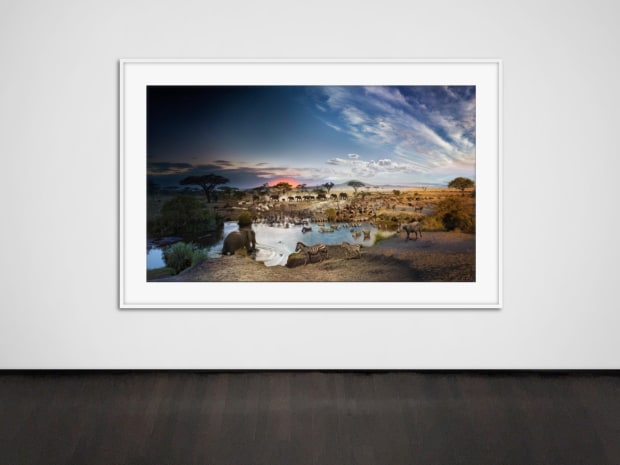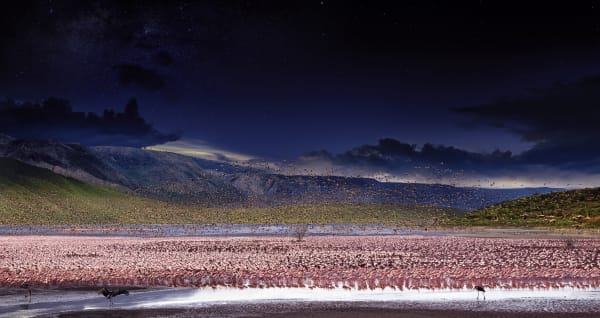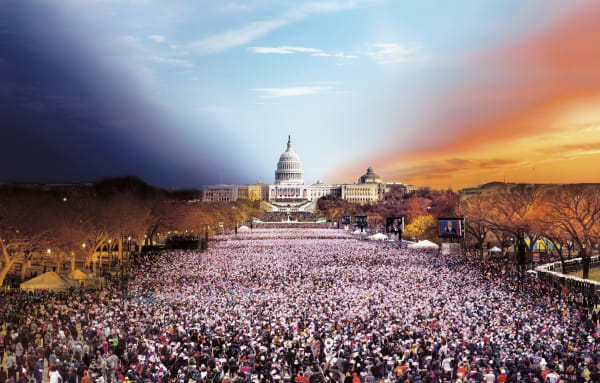

A single image in Stephen Wilkes’s Day to Night series is composed of an average of 1,500 frames captured by manual shutter clicks over a period of anywhere from 16 to 30 hours. During this process, Wilkes must keep his horizon line straight and maintain continuity, which means keeping his camera perfectly still. He then spends weeks in postproduction, piecing the best frames together into a final composite of layered images, essentially compressing time. For Wilkes, the excitement is in showing people something more than a photograph, something that provides a multidimensional experience, a window, as he describes it, into a world where the full spectrum of time, light, and experience plays across the frame. We’re treated to a view we’ve never seen before—one our eyes could never take in on their own.
Alexa Keefe, National Geographic

Out in the field, Wilkes commits himself to a tiny perch high above an urban or natural landscape. From here he’ll watch a narrative unfold: living beings interacting with their environment as light and time progress. He calls this vantage point the “ultimate catbird seat” —where he can partake in the joy of looking while being unnoticed by the players in the scene below him. During the photographing of these images, Wilkes doesn’t sleep, aside from a brief meditation here and there (though his assistant is instructed to shout if he sees anything). He doesn’t take breaks unless the sun or moon are in the right position and missing a few frames wouldn’t create a gap as the light transitions throughout the day.
- Alexa Keefe, National Geographic

Over the past three decades, Stephen Wilkes has established himself as one of the world’s most acclaimed landscape photographers. Living and working in Westport, Connecticut, Wilkes has traveled the world capturing the beauty of land and cityscapes, while also documenting the destruction of events like Hurricane Katrina and climate change. In April of 2020, Wilkes’s moving photographs of essential workers on the frontlines of the COVID-19 crisis in Westport were the subject of the Vanity Fair feature, "Without Them, I Don't Know What We'd Do."







This website uses cookies
This site uses cookies to help make it more useful to you. Please contact us to find out more about our Cookie Policy.